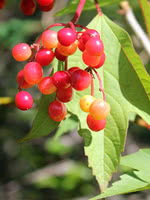Mon-Fri 9am - 5pm Mountain time
Highbush Cranberry vs Washington Hawthorn
Viburnum opulus var. americanum (trilobum)
Crataegus phaenopyrum
CUSTOM GROW
Highbush Cranberry produces attractive white flowers in late June and bears edible fruit that matures to a bright red colour in the late summer.
This shrub, native to much of Canada, is fast growing, and its fruit can be eaten raw or cooked into a sauce.
Washington Hawthorn is an attractive ornamental shrub that is dense enough to plant as a privacy screen. It produces clusters of white blooms in late spring to early summer.
Washington Hawthorn's red berries last throughout winter, bringing squirrels and birds to your property. In the fall, its foliage turns beautiful orange, scarlet, or purple.
One of the most overlooked trees on the prairies. This tree is often used as rootstock, a wildlife attractor, or a boulevard hedge. Give this one a second look.
This species is also known as one of the more salt-tolerant species for those with saline soils.
Please note: this plant is poisonous to dogs.
Highbush Cranberry Quick Facts
Washington Hawthorn Quick Facts
In row spacing: 0.6 m (2.0 ft)
In row spacing: 0.9 m (3 ft)

